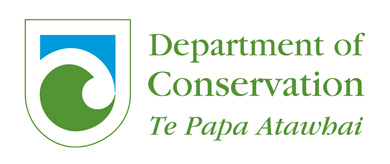Working with New Zealanders to renew and
restore our precious ecosystems
restore our precious ecosystems
We work with organisations, schools, iwi, communities and individuals throughout New Zealand through our restoration and environmental education programmes, and we advocate for our hero species pōhutukawa and rātā.
It seems hard to believe now, but in 1990 the future of pōhutukawa was uncertain. Project Crimson was established to protect and restore these beloved trees to New Zealand’s forests and coastlines.
Led by a bunch of enthusiastic and committed volunteers, Project Crimson initially set out to replant areas of the Northland coastline with pōhutukawa. Such was the success of that initial work, our mandate broadened to a national focus, to include rātā, and now to champion the planting of all native tree species.
Project Crimson has played a major role in turning around the health of the metrosideros species, but our beloved pōhutukawa and northern and southern rātā remain under threat today from myrtle rust and the ongoing impact from possums. Work also remains to be done to restore the Bartlett’s rātā species, with very few adult trees known to be in survival.
Through our programme Trees That Count, we’ve committed to helping Kiwis plant millions more native trees, of all species, as a way to fight climate change, strengthen ecosystems and grow healthier communities everywhere.
Learn more about Trees That Count and meet our team and our trustees here.
Our History
The initiative for Project Crimson grew out of a Forest Research Institute investigation (1989) into the health of pohutukawa. Scientists discovered that more than 90% of coastal pohutukawa stands had been eliminated. The tree had entirely disappeared in many areas along the west coast of Northland.
Disturbed by these findings, staff from Northland Department of Conservation, supported by New Zealand Forest Products (now Carter Holt Harvey), came up with the idea of creating a community-based project to help pohutukawa. In 1990 the Project Crimson Trust came to life.
Initially focused on the pohutukawa, because this species was considered to be significantly endangered, the Trust extended its mandate in 1996 to include the pohutukawa’s cousin – the rata.
While there are a number of different species of trees in the genus Metrosideros, to which pohutukawa and rata belong, Project Crimson focuses only on the mainland pohutukawa, and three tree rata: northern, southern, and Bartlett’s – these species are considered to be the most threatened among Metrosideros.
Much of Project Crimson’s stock was originally raised in prison nurseries. This partnership provided sound horticultural training for inmates while Project Crimson supplied community groups, schools and councils with a guaranteed stock of quality, ecologically-sourced trees.
Project Crimson’s work has captured the hearts of thousands of New Zealanders who have given their time and energy to hundreds of community and school projects to help this national icon.
Our Partners
The Tindall Foundation
In 2011 Project Crimson partnered with The Tindall Foundation to deliver Living Legends, our conservation project which saw 170,000 natives planted to celebrate New Zealand’s hosting of the Rugby World Cup.
The Tindall Foundation has been a wonderful supporter of Project Crimson, and we’re thrilled to be working with them again on Trees That Count, a major initiative to plant native trees to mitigate climate change.
Sir Stephen Tindall was the initiator of the Trees That Count programme, which aims to oversee the planting of millions of native trees throughout New Zealand, and Stephen and The Tindall Foundation have provided significant financial and in-kind support to Project Crimson.
Mazda New Zealand
A car company and environmental charity don’t seem the most natural of partners: but Mazda New Zealand has environmental good at the heart of its values. Since 2004, they’ve worked with Project Crimson to generate good outcomes for native planting and local communities.
In 2007, the Mazda Foundation approached Project Crimson searching for just the right project: a hybrid of successful environmental education and meaningful engagement with local communities. Meanwhile, Project Crimson was looking to meet ever-increasing demand for environmental education programmes and needed funding to deliver – the TREEmendous programme was born and delivered for in partnership for 15 years.
A new era: Trees That Count
With the Trees That Count online native tree marketplace launching in 2018, Mazda was one of the first major funders to come aboard, and that role continues each year. In addition to their significant funding of native trees, Mazda provides the Trust has two hardworking vehicles which are prominently adorned with our illustration.
Frequently loaded with trees and equipment for community planting events, they are a roving billboard spreading awareness of Trees That Count and give us the opportunity to travel to some remote and very special parts of the country.
Te Uru Rākau
Project Crimson and Te Uru Rākau partnered through the One Billion Trees Programme to significantly scale up our programme, Trees That Count.
Ka huihui tātou ki te whakatō i ngā rākau kotahi piriona.
Together we will plant one billion trees.
The advent of the Government’s One Billion Trees programme in 2018 saw the beginning of a three year partnership between Project Crimson and Te Uru Rākau. We were generously supported with funding to accelerate the Trees That Count programme.
We’re tremendously grateful for this support which enabled us to build our movement to attract significant further funding and public support for Trees That Count. Specific effort was also made in the regions with regional advisors employed to train and connect land owners, tree funders and planting groups.
Department of Conservation
Project Crimson and the Department of Conservation (DOC) have been inextricably linked since the Trust started in 1990. The combination of DOC’s vast knowledge in the area of conservation and their regional network of area offices, visitor information centres and field staff, have meant a strong and enduring partnership.
The Department of Conservation provided significant in-kind governance and support to establish Trees That Count in 2016.
In 2018, DOC also joined the Trees That Count leaderboard, through an injection of support from the Department of Conservation’s Community Fund. This established 12 new community planting partnerships and resulted in 76,000 native trees being planted over three years.
In 2022, we partnered with DOC to successfully manage the planting of 100,000 native trees in 15 outstanding projects throughout Aotearoa New Zealand, as a legacy to the Queen’s Platinum Jubilee. In 2023 celebrated New Zealand’s hosting of FIFA WWC together through The Greatest Goal, which raised funds for more than 50,000 native trees and also a commemorative planting programme for the King’s Coronation, He Rā Rākau Tītapu.

OMV New Zealand Limited
OMV has supported Project Crimson Trust since 2020, when they made a four-year commitment to support the significant native regeneration work occurring on project sites in Taranaki and the Wairarapa. Funding from OMV has enabled Ngati Tawhirikura hapū and Aorangi Restoration Trust to undertake large-scale plantings of more than 100,000 native trees, along with employment and upskilling, land preparation, pest control, monitoring, and native nursery establishment.

Bupa Foundation
The Bupa Foundation, which has been operating in Australia since 2005, has invested more than $35m (AUD) in over 130 different health and care projects and organisations. Bupa recently announced the new directions for the Foundation which will focus on building mentally healthy and resilient communities and creating a healthy planet for healthy people. This also included expanding the work of the Foundation to support activities in New Zealand.
The Bupa Foundation has teamed up with Project Crimson’s programme, Trees That Count, to plan and plant three ‘legacy forests’ in 2022, planting more than 10,000 native trees across three regions and 5,000 native trees through community projects.
Each legacy forest is intended to create green spaces for the use and enjoyment of future generations, as well as enabling New Zealanders to get involved with planting native tree spaces that contribute to biodiversity, health and wellbeing and fighting climate change.





